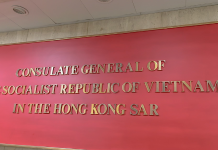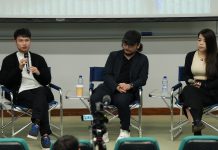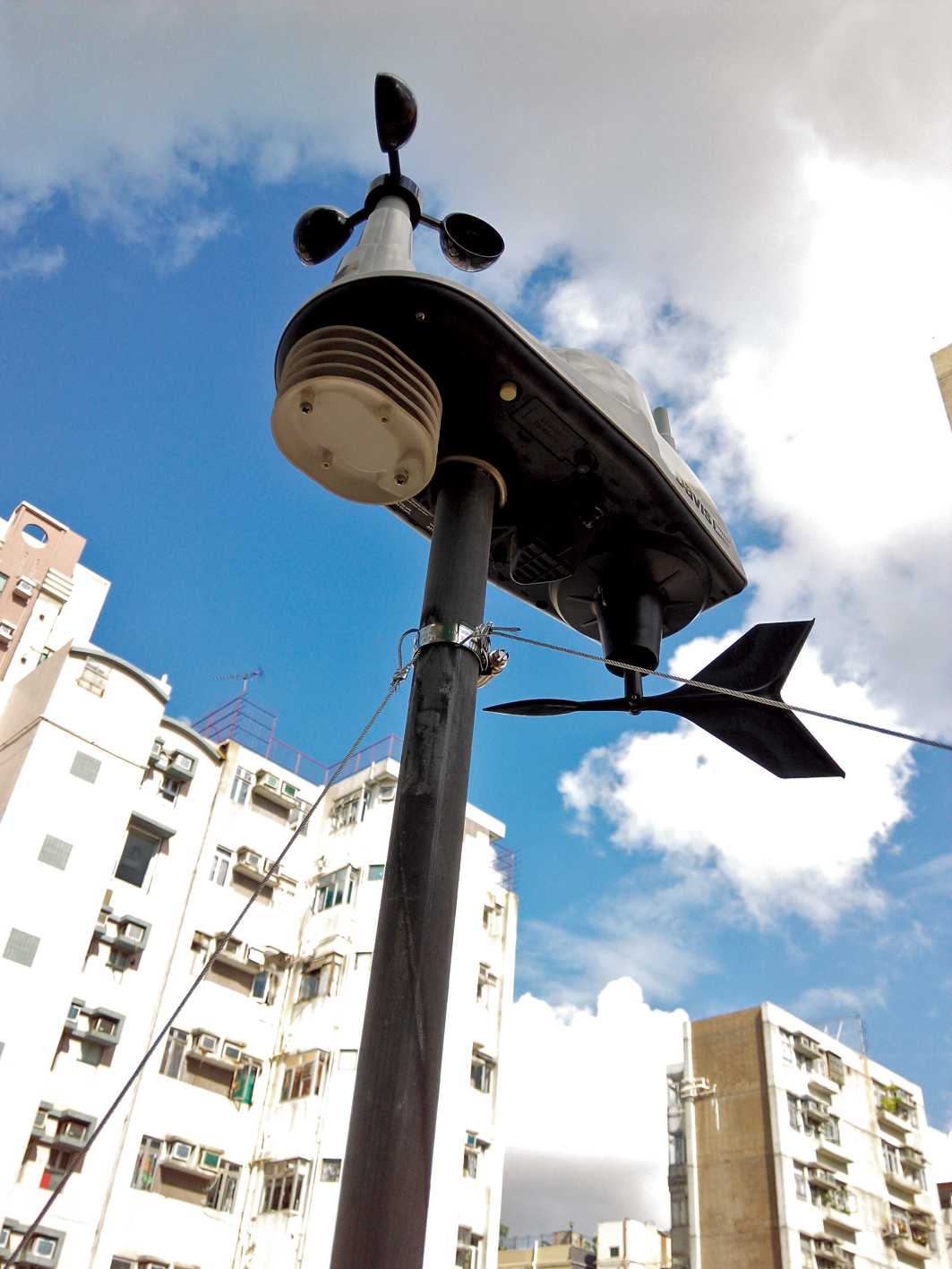No typhoon too terrible for Hong Kong’s storm hunters
By Grace Cheung
It was around 11:00 p.m. on 15 September 2014 and the T8 tropical cyclone signal had been issued for half an hour. Thick, dense clouds gathered in the sky and the raging wind was howling. Suddenly, a deafening bang split the air and tree branches collapsed under the gale. Instead of taking shelter at home, three youngsters in raincoats trudged uphill on a path strewn with fallen branches in the driving rain and then walked up to the roof of an eight-storey building facing Tolo Harbour. They held up their anemometers to measure the wind speed of Typhoon Kalmaegi, which had left chaos and destruction in the Philippines, and was now passing over Hong Kong.
Every summer, from July to September, Hong Kong’s meteorology enthusiasts pursue one of their most popular activities – wind chasing. They gather in the most exposed and wind-stricken areas to experience the power of the typhoons that visit this humid, sub-tropical city with four fairly distinct seasons and a temperate climate.
But tropical cyclones, while particularly fascinating to nearly all Hong Kong’s weather geeks, is just one of the aspects of their hobby. In general, meteorology is the science of the weather, or the study of the weather phenomena within the Earth’s atmosphere.
Calvin Yu cheuk-hei, a second year university student, was one of the young wind chasers experiencing Typhoon Kalmaegi on the Sha Tin rooftop that day. He has been a key committee member of the Hong Kong Meteorological Communication Centre – a group of amateur weather enthusiasts – for five years. Yu points out the differences between meteorology and astronomy, two disciplines that many Hongkongers tend to mix-up. “Phenomena that occur out of the atmosphere and are related to other planets fall under astronomy, such as solar eclipses and lunar eclipses,” he says.
Yu says the misconception is partially caused by the fact that the Hong Kong Observatory (HKO) is the official department for disseminating information concerning both meteorology and astronomy. “The Chinese name of Hong Kong Observatory implies ‘astronomy’, and the HKO is also responsible for reporting the times for eclipses and meteor showers,” he says.

While meterology is a mystery to most ordinary Hongkongers, it has been a lifelong passion for 43-year-old Clarence Fong Chi-kong. Fong launched the website Weather Underground of Hong Kong in June 1995, even before the HKO had a website.
The website is now the city’s most influential unofficial educational platform for sharing information about meteorology. It regularly publishes the latest weather charts, data and satellite maps.
When Fong first started it, he simply shared the statistics and graphs collected from other foreign sources online. “Before the launch of my online data base, HKO hadn’t published any of its weather statistics to the general public,” he says.
Since the launch of the HKO website in 1996, Fong’s site has run alongside it and he now writes blogs on the website to explain weather phenomena in a way laymen can understand. He has also started a Facebook page for Weather Underground of Hong Kong as an instant sharing platform.
Fong once worked at the HKO, joining as experimental officer in 1993, but he was disappointed the job was not a purely scientific one. As he had studied programming at university and had not studied physics at school or in college, he could not become a scientific officer. Besides, what he really enjoyed was conducting his research without any constraints. “I like to see the changes of weather and forecast them. Whether they’re accurate or not is just my business and I don’t need to explain to others…or give them any warning,” he says. So he left the HKO in 1995 and is now working as a web developer.
Fong first got into meteorology because he was fascinated with typhoons. He reminisces about his childhood days when the HKO physically hoisted typhoon signals onto selected towers on high ground. “These metal signals weighed over 40-50 pounds,” he says. “I would raise 3-D typhoon signals made of cardboard at home, and asked my parents to look.”
By the time he was at secondary school, Fong was already writing computer programs for entering tropical cyclone statistics and plotting typhoon tracks using real-time information from radio announcements. He recalls the computer was an Apple II which his father had bought him as a reward for his good academic results. He also regarded libraries as a treasure trove of information and he spent many hours building up his knowledge of meteorology in his university library.
Unlike the young weather fanatics, Fong rarely goes wind chasing as he does not want to take the risk. Instead, he sets up weather stations in secondary schools he collaborates with in Tai Po and Aberdeen, as well as his former home in Prince Edward. These provide him with real-time weather data to share on his website, including temperature, humidity, precipitation, wind speed and so on. “The weather stations are wireless and quite portable,” he says, “And they are accurate as they are the same models that were used at the Beijing Olympics Games.”







































